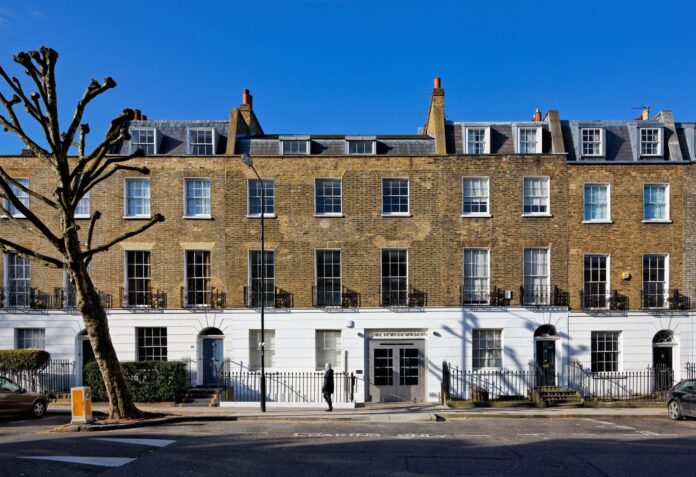Under pressure from the cost of living crisis, the Jewish Museum London will close its doors on 30 July and sell the building to fund its planned move to a new and bigger home. In a press statement announcing the news earlier on 1 June, the museum of British Jewish history and culture said it was facing “unanticipated rising costs” and ultimately needed to become “more sustainable into the future”.
The cost of living crisis was the “immediate trigger” that made the current building in Camden, north London, “untenable”, the museum’s chair Nick Viner tells The Art Newspaper. Since 2010, the museum has been located in a Georgian town house annexed to a former piano factory, which “was already relatively hard to heat and cool and expensive to maintain”, he says. A sharp 70% increase in energy bills and the impact of inflation on construction costs meant “significant capital sums” were needed just to carry out “basic building maintenance”.
These challenges come on the heels of a “much more difficult trading environment” created by the Covid-19 pandemic, Viner says. Visitor numbers have been “slow to recover” and the emergency grants from the government and major funding bodies have ceased. The Jewish Museum London had also experienced an earlier period of “financial crisis” in 2019, prompting a review of its donor-dependent business model.
“Financial considerations became so all-consuming that it pushed us to the decision [to sell the building],” Viner says, but the board of trustees also felt that the Camden site “had a number of constraints which didn’t fit with our long-term vision”. The location was “quite hidden away” and had limited space to display the collection, organise temporary exhibitions and welcome visiting school groups. Past exhibitions include a show of Life? Or Theatre?, the extraordinary series of 200 gouaches made by the German Jewish artist Charlotte Salomon before her deportation to Auschwitz in 1943.

A school group visiting the museum © Jewish Museum London
London has “the smallest Jewish museum among major European cities”, the museum says, “despite being home to the second largest Jewish community and boasting the second largest collection”. According to 2021 census data, around 145,000 people self-identifying as Jewish live in greater London, which accounts for more than half of the total British Jewish population of 270,000 in England and Wales. The museum’s collection counts more than 40,000 objects of Judaica and social history.
The museum trustees hope the sale of the Camden building will kick off a major fundraising campaign for a “more prominent” future venue with space for more ambitious displays, education programming and all-important revenue-generating activities. Unlike the state-subsidised Jewish museums elsewhere in Europe, the project “will depend on private funders” from the British Jewish community, Viner says. The goal is to open in time for the museum’s centenary in 2032.
While the search gets under way for a new permanent home, the museum plans to reopen in a “pop-up” location in central London as soon as next year, Viner says. Even without a physical space, outreach work with schools is set to continue and the museum is in talks to lend pieces from the collection to institutions around the UK from the autumn.

























